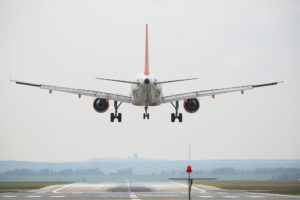
Photo: 123RF
Flying without Fear
Why is flying on an airplane so nerve-racking?
For more than 2 years after restrictions and lockdowns due to Covid-19, people are rushing back to fly again.
As the urge to fly to places where international borders are opening up, air ticket bookings are reported to be fast picking up.
Could this rush to fly be a ‘revenge travel’ after being held back for so long?
It probably looks like it. This is good news to the airline industry.
I shall now digress to answer Jake Baker’s query as to why flying is so nerve-racking.
I would assume him to be someone who is extremely nervous or he could probably be a fearful flyer.
Well, it is perfectly reasonable to be afraid of flying and according to studies, even some pilots do get flight anxiety too.
Some of the reasons people are afraid to fly are because of fear of the plane crashing, fear of heights, feeling claustrophobic, fear of turbulence and many other triggers.
I have in previously mentioned that driving is more dangerous than flying. I have also discussed on the safety statistics that there is a one in 11-million chance of being involved in a fatal plane crash. Compare this to driving where the chance of being killed in a motor car accident is one in 5000.
Among the most common anxieties, one of them is air turbulence. I wish to stress that there is nothing to be fearful of this rocking motion. It is like driving on a bumpy road with lots of potholes.
On some planes you can even see the wing tips flexing in flight. Do not worry as they are basically like shock absorbers attempting to smoothen the bumpy ride. In fact, on the Boeing 787, it can flex as much as 26 feet up and it would not snap.
Even if all the engines failed, a plane can still glide to a safe landing as seen in the ditching of the Airbus A320 in the Hudson River crash in 2009.
Some have fear of contracting Covid-19 on the flight. Remember, fresh air in the cabin is refreshed every 3 minutes. It is recycled and pushed through HEPA filters which are of hospital operating room standards. They remove 99.9 % of bacteria and virus in the cabin air.
Talk to the flight attendants as they are trained to handle any safety issues and are always there to make you feel comfortable.
Pick a seat during your booking at a location that you think will not trigger your anxieties. If you are prone to motion sickness, fear of heights or is claustrophobic, stay away from window seats. If you love to know what’s going on outside at all times, then chose a window seat.
Find a distraction that will steer you away from your anxious thoughts like listening to calming music, podcast or watch a movie. That’s not that simple if the triggers are overpowering like continuous turbulence.
If your anxiety is truly paralyzing, do seek professional help before your next flight.
Knowledge is the key to reducing your flying anxieties. I wish you a safe and comfortable flight!
View a video on Virgin Flying Without Fear here
https://www.youtube.com/watch?v=ayXvS5b9jVE